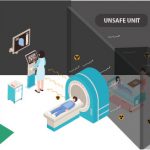5 Uses of Industrial Radiography
“Words can be like X-rays, if you use them properly they’ll go through anything. You read and you’re pierced” remarked the famous English writer and philosopher Aldous Leonard Huxley to emphasize the power of words. However, these golden lines also establish the fact that X-rays, when used properly, can work wonders for us.
Radiography refers to an imaging technique where X-rays, gamma rays, or similar ionizing or non-ionizing radiation are used to view the internal structure of an object. It can be applied to medical and industrial radiography. This blog post will help you to figure out five different uses of industrial radiography.
As we know, several industries use the testing technique called “industrial radiography” to check for defects in metal parts and welds to ensure the safety or durability of the goods produced. This Non-Destructive Testing is abbreviated as NDT. This particular testing process done on gas or oil pipelines and associated fields is called “open field radiography”. The technique employs either x-rays or gamma rays to obtain information. It should be noted that X-ray radiography, is generally used at a fixed location as this method can bring forth radiation hazard too. Although portable radiography devices often use sealed radioactive sources that emit gamma rays yet adequate shielding can be done by AERB registered agencies to keep radiation hazards at bay. Now that we have understood the term industrial radiography well, let us chalk out its 5 important uses:-
• Gas and Oil Pipelines: Industrial radiography in the form of NDT is the most effective way to inspect the processing equipment, pipe works, and overall pipeline network particularly in the Gas and Oil industry. Under this method, all sorts of inspection are carried out without altering the actual structure being inspected and even without interrupting the day-to-day operations. It helps us to measure pipeline wall thickness and also checks for possible corrosion or weaknesses in welding. In short, the NDT technique identifies the flaws that are invisible to the naked eye without damaging the subject being inspected.
• Metal Welding: The method of weld testing for metals in metal welding, through radiography uses X-rays (produced by an X-ray tube) or gamma rays, produced by a radioactive isotope. The basic principle remains the same as that in medical radiography i.e., penetrating radiation is passed through a solid object (here through a metal weld rather than a part of the human body), onto a photographic film, to obtain an image of the object’s internal structure. The energy is not uniformly absorbed by the object as its thickness and density vary throughout its structure. Evidently, certain areas of the film, obtained thereafter, remain lighter as they are exposed to less energy. Therefore, areas of the object where the thickness has been changed by discontinuities, such as porosity or cracks, will appear as dark outlines on the film. Likewise, all discontinuities in the metal weld structure can be easily detected by studying the shape and variation in the density of the metal via this testing technique.
• Boilers: The prevailing era of global competition demands for fossil-fuelled boilers, for electricity generation and several other purposes. This puts thrust on acquiring newer techniques of operating them in cycling modes for which the boilers were not originally designed. Generally, recurrent changes can result in boiler tube failures. The need of the hour is regular inspection, with the help of latest tools and techniques like industrial radiography, to avoid shortcomings. The NDT technique is quintessential to detect boiler defects and corrosion because conventional technology misses out on certain important aspects of the same. For example, issues like cracks and damage in the water wall tubing of boilers can develop as multiple cracks that initiate and grow on the inside surface of the tubes and on the insulated side of the tube. These locations are inaccessible due to the insulation but quite easily monitor-able with industrial radiography.
• Vehicle Parts: Today, life runs on wheels. We all use vehicles every now and then, as per our convenience and requirement. Has it ever occurred to you that the risks involved in the overall process of designing, manufacturing and putting it to use as your favourite commute might be fraught with grave risks? It will be no exaggeration that allowing defective products to go into vehicles and in the market will breed into mishaps and loss of lives. However, these possible risks could be minimized by adopting NDT or industrial radiography to check for issues internally without damaging the original vehicle structure.
• Aircraft Parts: As we know, an apt inspection system to look for and fix issues in several aircraft parts with a view to ensuring safety is incomplete without industrial radiography. The non-destructive testing techniques can certainly highlight damage or other issues in various aircraft components. This technology is now extensively utilized throughout industries such as aerospace, space aviation, wind power, submarine, nuclear power plants, and off-shore oil and gas. The NDT technique is beneficial at both the stages of aircraft designing or before aircraft assembly and also as a part of active aircraft testing. Additionally, it can examine critical welds on heavy aluminum structures, which is crucial for space and aviation industries.
As every coin has two sides, likewise industrial radiography has certain limitations. On account of this, the agencies providing specialized services in associated fields, need to obtain permits or consent from authorized agency (AERB). Moreover, the professionals handling these testing procedures should undertake special training and the area should be cleared of all inhabitants. Simultaneously, optimum measures shall be taken to ensure subsequent radiological safety and protection.






